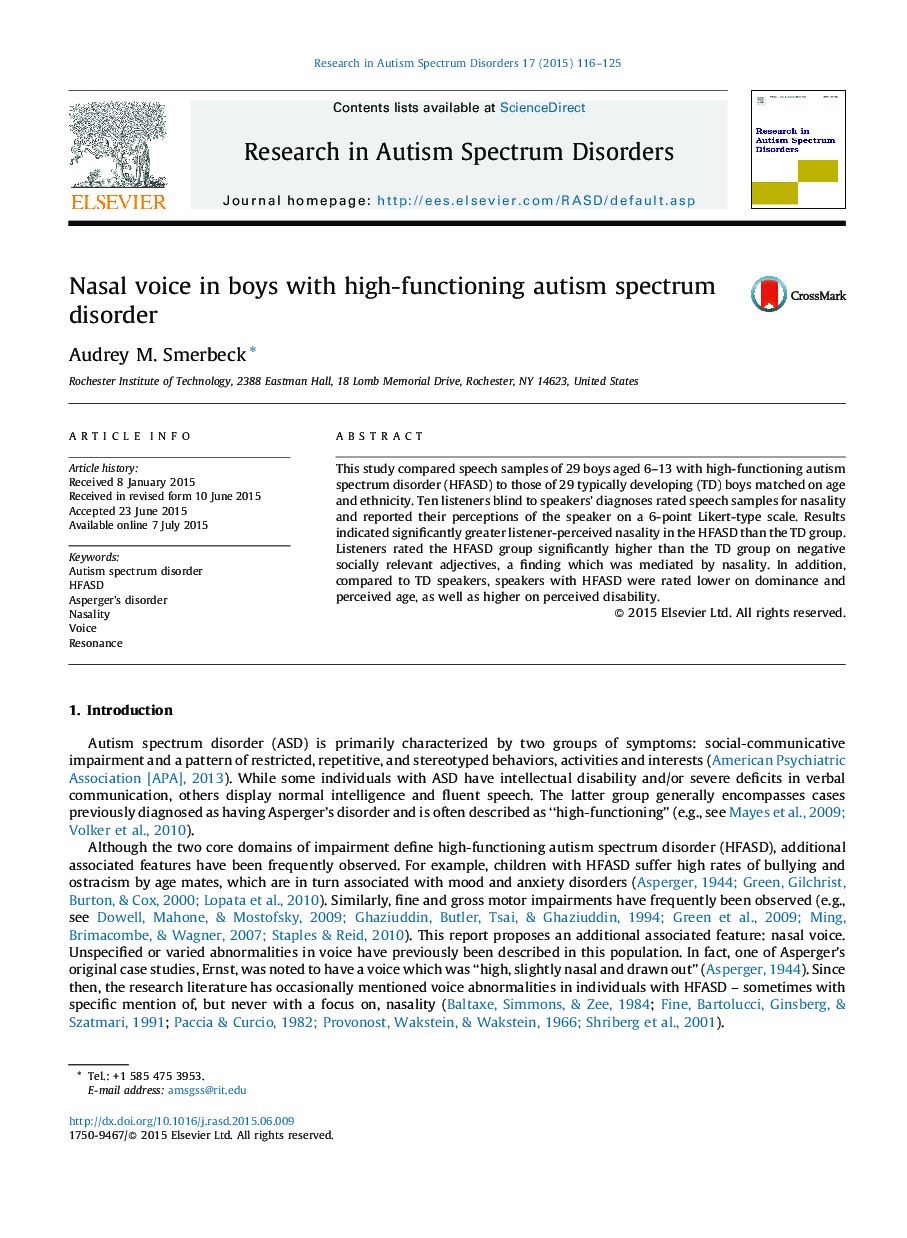| Article ID | Journal | Published Year | Pages | File Type |
|---|---|---|---|---|
| 370048 | Research in Autism Spectrum Disorders | 2015 | 10 Pages |
•HFASD boys were more likely to have nasal voices than their typical peers.•Neutral speech of HFASD boys was perceived as whiny or annoying.•Nasal voices were perceived as younger, less masculine, and less dominant.•Nasal voice may play a role in the low social status of youth with HFASD.
This study compared speech samples of 29 boys aged 6–13 with high-functioning autism spectrum disorder (HFASD) to those of 29 typically developing (TD) boys matched on age and ethnicity. Ten listeners blind to speakers’ diagnoses rated speech samples for nasality and reported their perceptions of the speaker on a 6-point Likert-type scale. Results indicated significantly greater listener-perceived nasality in the HFASD than the TD group. Listeners rated the HFASD group significantly higher than the TD group on negative socially relevant adjectives, a finding which was mediated by nasality. In addition, compared to TD speakers, speakers with HFASD were rated lower on dominance and perceived age, as well as higher on perceived disability.
